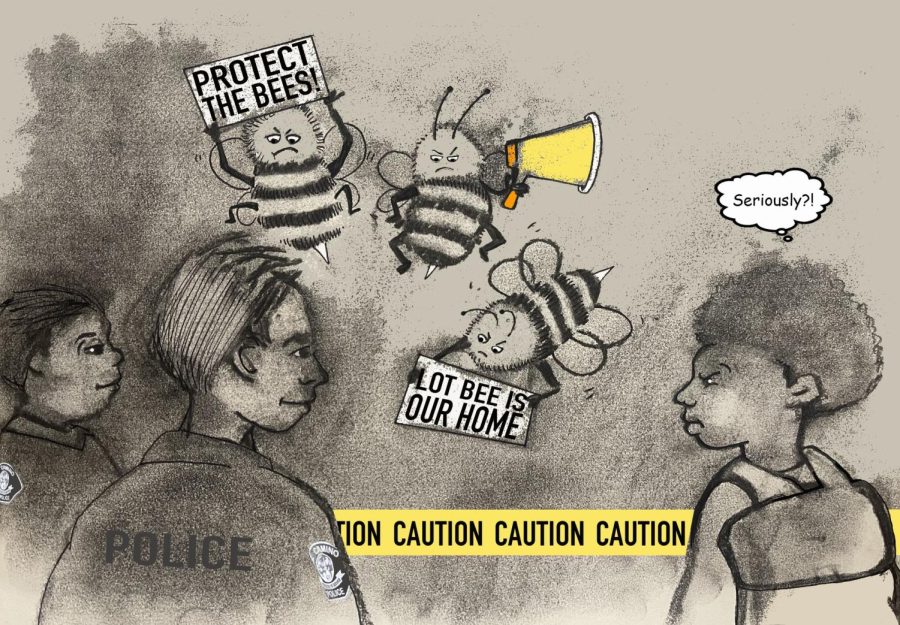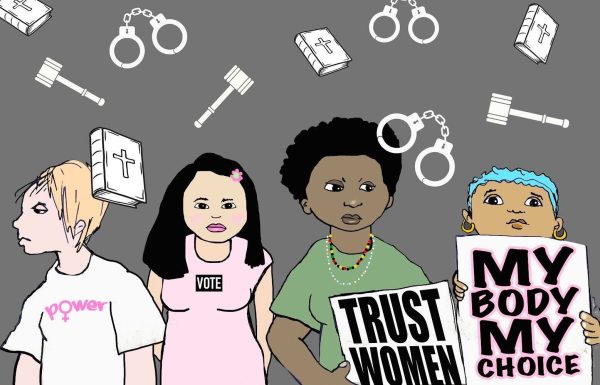Showdown in Lot Bee demonstrated how to prevent police use-of-force
El Camino Police Chief Michael Trevis, Sergeant Ruben Lopez and several other officers responded to a swarm of bees that occupied the hood of a car in parking Lot B on March 23.
The police department said the bees were potentially “dangerous.” The bees could have been charged with grand theft auto, terrorist threats, attempted assault or trespassing.
The police could have screamed at the bees over a bullhorn, “MOVE AWAY FROM THE CAR!”
They could’ve blasted the bees with pepper spray, surrounded them with a SWAT unit, surveilled them from above with helicopters and drones, hit them with tasers, put them in a chokehold or drew their guns and opened fire.
But they didn’t.
Instead, officers cordoned off the area with yellow caution tape avoiding the more threatening message, “Police line. Do not cross.”
They de-escalated people’s fears by creating a plan, said they were concerned about the safety of the bees, and didn’t assume the bees had malicious intentions.
They slowed down their response and ensured the bees felt less threatened. They didn’t label them as “gang members” even though the bees were in a group of three or more acting together to commit a crime, the definition of a gang under state law.
The police department recognized they didn’t have the necessary skills to protect the bees or the public. Lopez said they worked with the Facilities Planning and Services division to contact a beekeeper. The beekeeper’s assignment was to relocate the bees without killing them, Lopez said.
Trevis said the officers are here “to keep everyone safe.”
“We’re just waiting for the beekeeper to come and do what he has to do to take care of the bees,” Trevis added.
As a result, there were no injuries or deaths. The owner of the car, who is allergic to bees, was happy that he wasn’t stung and to get his car back. The bees were taken to a safer place, not a jail cell.
If only law enforcement protected people of color, unhoused people and people with disabilities the way the officers protected the lives of those bees.
For decades, LA County has led the U.S. in use-of-force homicides. According to the District Attorney’s Office, more than 1,100 people have been killed in LA County by law enforcement since 2000.
The California Department of Justice found more than 50% of use-of-force incidents in 2021 targeted people with a mental health or cognitive disability.
On March 23, El Camino Police proved law enforcement could act responsibly: Slow down, de-escalate tension, reduce police role, call in experts with the necessary skills to respect, protect and serve everyone.
Community action is forcing LA County along with other cities and counties to change.
New phone numbers have been created to generate non-law enforcement responses to emergencies. Officials are expanding public-health programs to deal with many calls that police now cover.
But there are few people ready to serve as civilian first responders.
El Camino College can train the workforce needed for a new public safety vision.
The college should establish a work group that brings together the nursing, emergency medical technicians, fire and public safety programs along with groups on campus that can provide help to communities most impacted by law enforcement use-of-force.
Community concerns and solutions could be represented by FIRST (Formerly Incarcerated Re-entry Students Thriving), the Black Student Success Center and Undocuwarriors, among others.
El Camino has a responsibility to ensure students and employees are safe on- and off-campus in communities where they don’t fear being killed by police.
People such as Andres Guardado, 18, killed by Los Angeles County Sheriff’s Department in Gardena, Christopher De’Andre Mitchell, 23, killed by Torrance PD, Eric Rivera, 20, killed by LAPD in Wilmington and countless others might still be alive if they were treated like the bees in Lot B.













